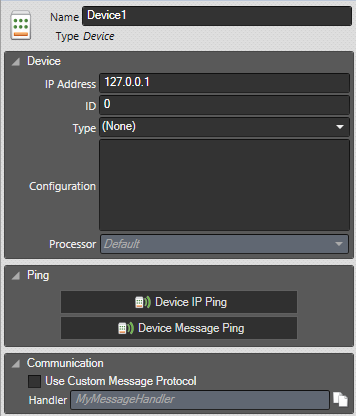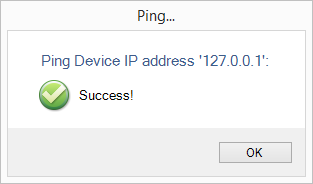
Each Device that Sym3 connects to, needs to be defined through a Device connection. This defines the communication driver type and properties.
In Project Explorer, right click on Devices > New.
In the Property Editor, select the type of Device and set the ID. The ID must be unique for each Device.
When selected, each device is assigned a set of properties that can be maintained in the Property panel.

Name: Freeform name of the device. E.g. A2E
IP Address: The IP address for this device
ID: A unique device number assigned to this device. E.g. 100
Type: The Driver Type and can be one of the following:
For details on the driver properties supported, refer to the section for the driver type.
Configuration: A multi-line list of the configuration parameters for this device. Refer to the configuration that is required for the device type.
Processor: Default is 'Default'. This value is overridden by a template.
Device IP Ping: Send a 'Ping' message to the device IP. The response is displayed in a pop-up.

Device Message Ping: Send a simple message to the device specified. The response is displayed in a pop-up (requiress configuration).
Use Custom Message Protocol: Default unticked
If “Use Custom Message Protocol” is ticked, the javascript function defined in “Handler” will be called for every communication received on this device (including Sym3 messages)
Handler: default to 'MyMessageHandler'
A button has been added so the user can copy the javascript function and then paste it in Simulation Script. An example javascript function is as following:
| Name | Type | Description |
| device | String | Name of device for this message |
| data | [] | Array of integer representing the ASCII value (value between 0 and 255) |
| length | Integer | Size of the data array |
function MyMessageHandler(device, data, length) {
// Executed when a message is received on this device
}